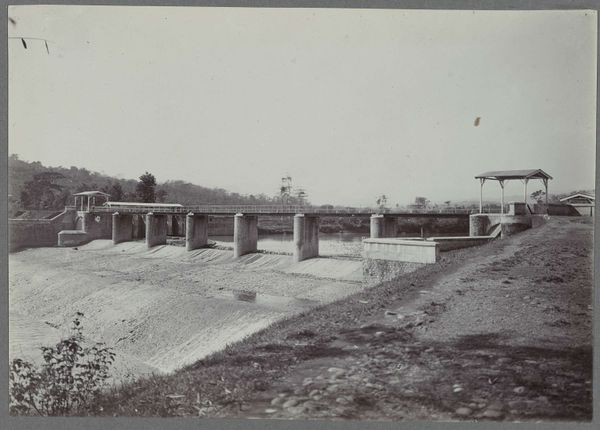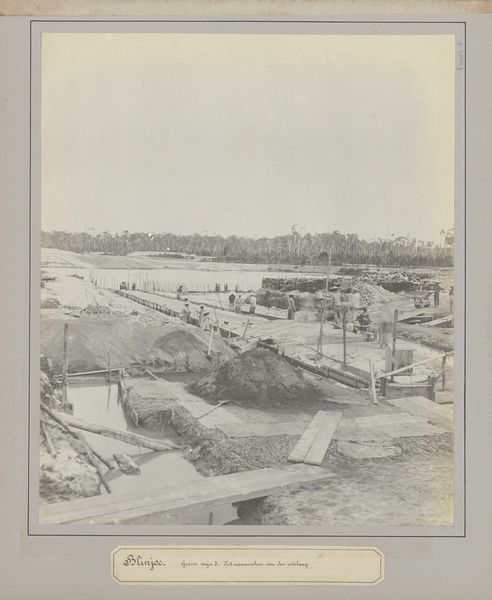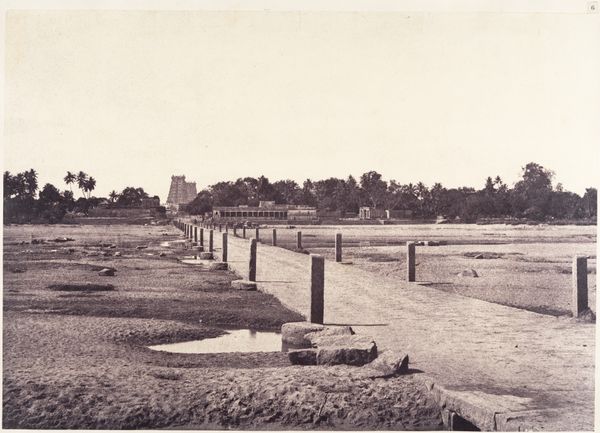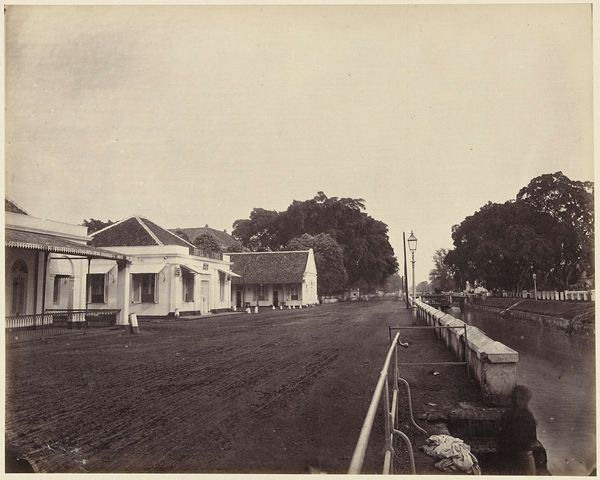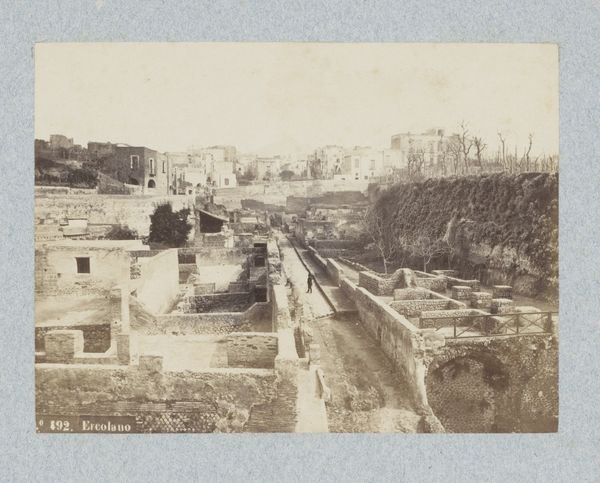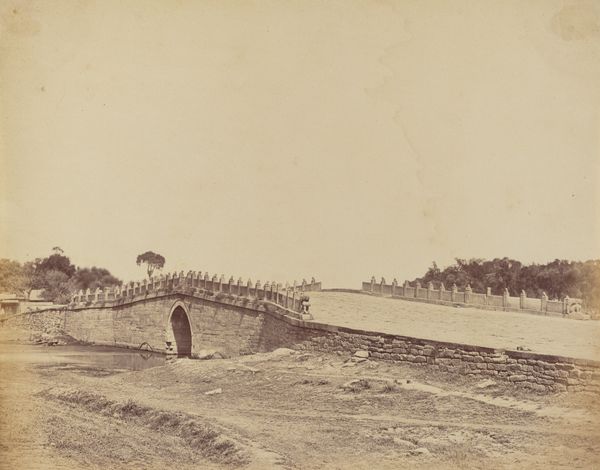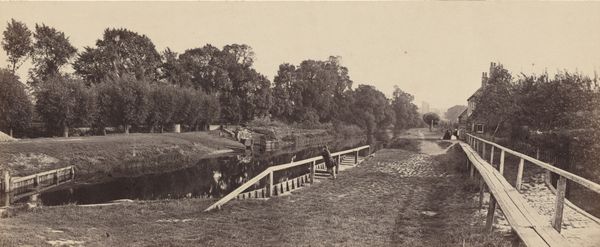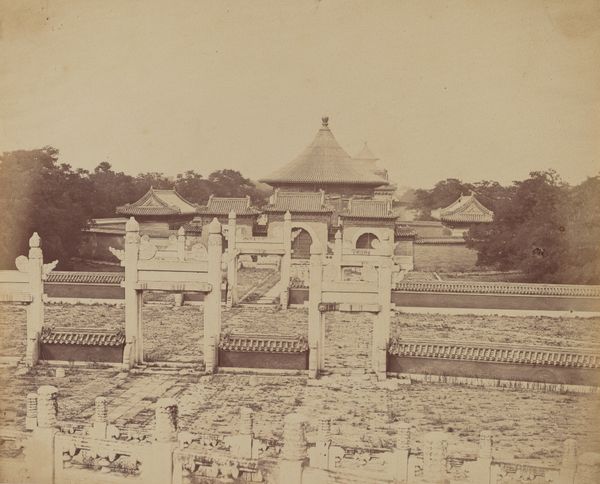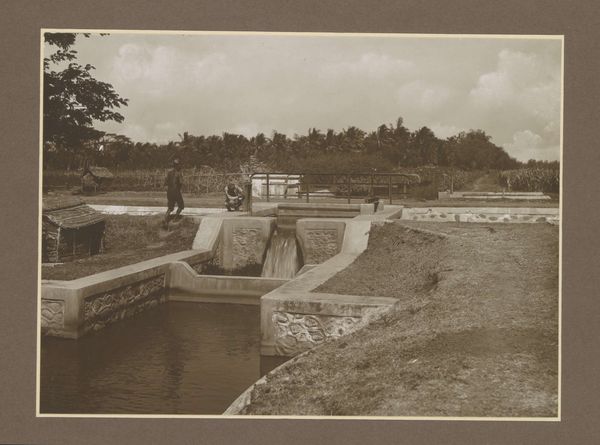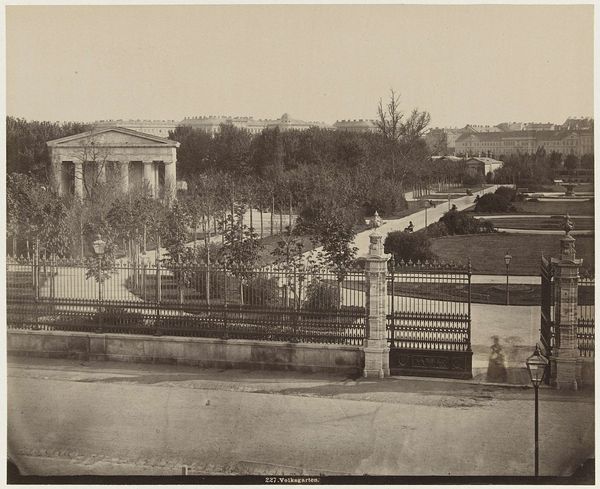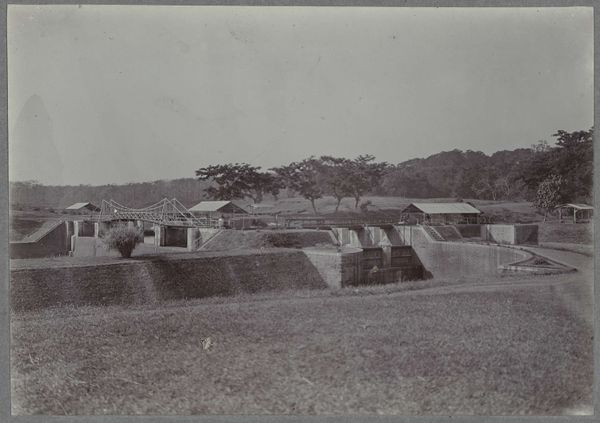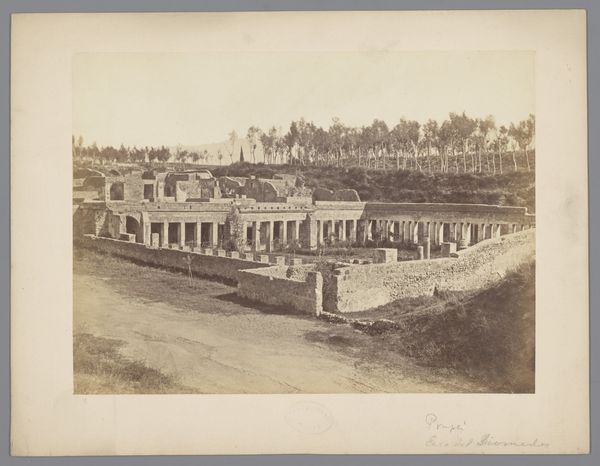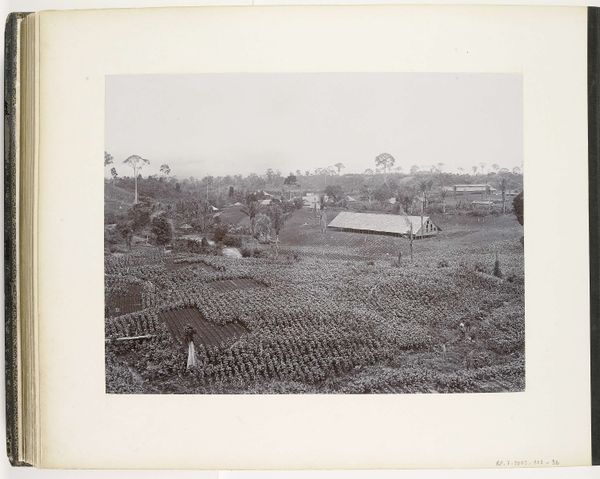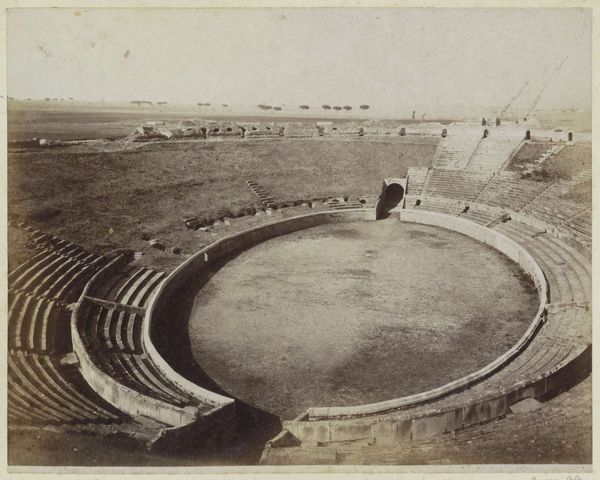
daguerreotype, photography, architecture
#
16_19th-century
#
landscape
#
daguerreotype
#
photography
#
architecture
Dimensions: Image: 19.1 x 24.8 cm (7 1/2 x 9 3/4 in.) Mount: 21 x 28 cm (8 1/4 x 11 in.)
Copyright: Public Domain
Curator: This photograph, "Indigo Vats," dating back to the 1850s, comes to us from Captain R. B. Hill, and it's currently residing at the Metropolitan Museum of Art. He utilized the daguerreotype process. Editor: My first thought? Bleak. Despite the hint of landscape in the background, the foreground just speaks of brutal geometry, like viewing an ancient ruin, or rather, what’s *left* after ruin. A series of silent sentinels almost... Curator: Those “sentinels,” as you call them, are the indigo vats, central to the cultivation of indigo dye in colonial India. What appears bleak to your eye, carries a complicated colonial weight, don’t you think? Editor: Oh, undoubtedly. One can look at these processes - these actual physical things in a photo - and quickly get past just the pure 'artistic' view and get to talking about labor and how things are made. So, to your point, we must unpack who benefits here, right? Hill's technical skill serves to document the apparatus of resource extraction... quite elegantly, but also dispassionately. Curator: Dispassionate perhaps at first glance. Yet, as a fellow artist, I’m caught by the very *particularity* of light he’s captured in that exact moment, on that specific day, bouncing off the architecture of that vat. Isn't that something? Almost transforming what might be cold industry into... poetry of light? It almost humanizes something potentially inhumane. Editor: Humanizes or masks? Let's not forget the actual making of this brilliant dye hinged on systems of coercion. To be perfectly honest, what really hits me here are these rigid concrete containers contrasted with the distant suggestion of vibrant nature... as if one’s purpose were only to serve or frame the other. Curator: An enduring and quite sobering perspective. This one, like life, surely offers contrasts and perhaps mirrors within mirrors. Editor: Well put. On one hand a portrait of ingenuity... on the other hand, the chilling shadow of exploitation. Not your typical landscape shot then.
Comments
No comments
Be the first to comment and join the conversation on the ultimate creative platform.
